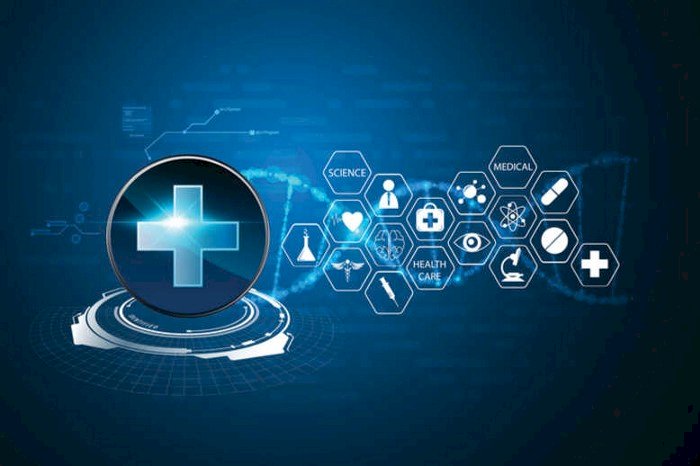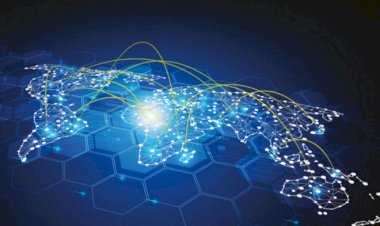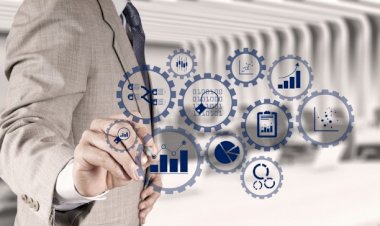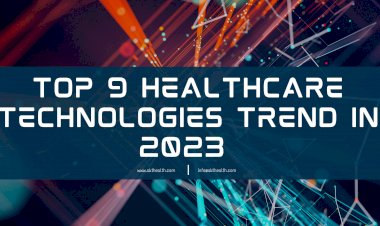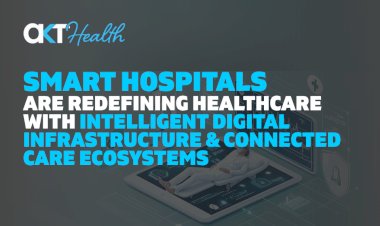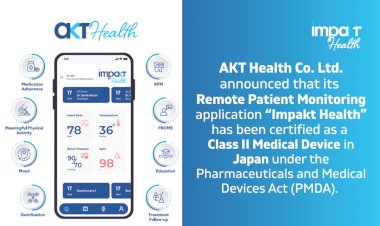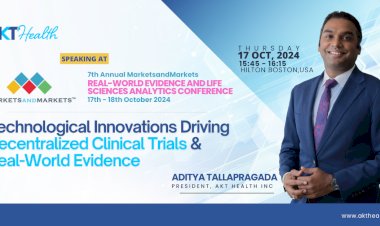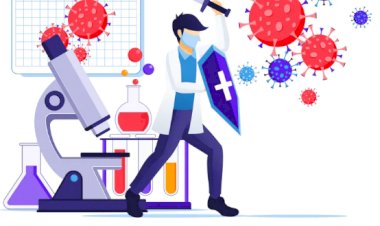Bigdata & Blockchain in Healthcare
In healthcare Big data used to prolific health data collected from various sources comprising Electronic Health Records (EHRs), Medical imaging, genomic sequencing, payor records, pharmaceutics research, portable wearables, social media and other medical gadgets to name a few.
Big data and healthcare:
In healthcare Big data used to prolific health data collected from various sources comprising Electronic Health Records (EHRs), Medical imaging, genomic sequencing, payor records, pharmaceutics research, portable wearables, social media and other medical gadgets to name a few.
These characteristics distinguish it from traditional electronic medical and human health data used for decision-making:
. It’s available in extraordinary high volume
. It moves at high velocity and spans the health industry’s massive digital universe and
. Because it derives from many sources, it is highly variable in structure and nature.
However, bigger challenges in integrating the Big Data with highly secured Blockchain has been under research and we have been working with 2 main Big Data Blockchain DBs like BigChainDB and HBasechainDB and will further update on our experiences with those 2 databases Applications for Big data in Healthcare:
· Diagnostics: Data mining and analysis to identify causes of illness
· Preventive Medicine: Predictive analytics and data analysis of genetics, lifestyle, and social circumstances to prevent decease
· Medical Research: Data-Driven medical and pharmacological research to cure disease and discover new treatments and medicines.
· Reduction of Adverse Medication Events: Harnessing of big data to spot medication errors and flag potential adverse reactions
· Cost Reduction: Identification of value that drives better patient outcomes for long term savings.
· Population Health: Monitoring big data to identify disease trends and health strategies based on demographics, geography and social economics.
Professional care and greater access are available by expanding diagnostic service. Applications for mobile devices advice patients on their medical condition by aggregated data and can recommend patient seek medical care based on input to the app.
Decreasing price, the greater insight that medical data gives physicians translates to better patient care, shorter hospital stays, and fewer admissions and re-admissions.
· Clinic uses big data analytics to identify patients with more than one chronic condition (comorbidity) as likely to benefit from early interventions at care homes, thereby saving them from visits to the emergency department.
· Knowledge derived from big data analysis gives healthcare providers clinical insights not otherwise available. It allows them to prescribe treatments and make clinical decisions with greater accuracy, eliminating the guesswork often involved in treatment, resulting in lower costs and enhanced patient care.
· Analysis of healthcare big data also contributes to greater insight into patient cohorts that are at greatest risk for illness, thereby permitting a proactive approach to prevention. In short, analysis of healthcare big data can identify outlier patients who consume health services far beyond the norm. It can pinpoint protocols and processes that deliver substandard results or whose costs are excessive in contrast to outcomes. It can be used to educate, inform and motivate patients to take responsibility for their own wellness. By bringing financial and clinical data together, it can highlight efficiencies and effectiveness of treatment plans.
Bigdata is became “Oceans” from Lakes in healthcare:
Just as a researcher prefers to work with sample sizes of, say, millions of values rather than only hundreds, the more information contained in a big data sample, the better. While the term “data lake” is often used to describe a collection of raw big data, several events are underway that promise to build what might be called “data oceans” brimming with research and analysis opportunities.
Researchers and funding agencies recognize the benefit of integrating and sharing clinical research data to fill such “oceans.” Centre of Health Information and some university together providing access to the Biobank and plans to add 50 million electronic patient records. In addition:
· Medical Information Framework aims to improve access to health data derived from the electronic health records of some 50 million from particular continent, as well as cohort data sets from participating research communities.
· Research platforms and others who need access to pharmacological data. It was built in cooperation with academic and commercial organizations and allows users to extract information and make decisions on complex pharmacologic matters.
· A division of the Dutch multi-national company, N.V. Philips, has aggregated more than 15 petabytes of data taken from 390 million medical records, patient inputs, and imaging studies. Healthcare personnel can access this massive collection to obtain critical data for informing the clinical decision-making process.
Implementation challenges:
Healthcare organizations face challenges with healthcare data that fall into several major categories including data aggregation, policy and process, and management. Let’s explore these further.
· Data Mapping Challenges: First, patient and financial data are often spread across many payors, hospitals, administrative offices, government agencies, servers and file cabinets. Pulling it together and arranging for all data producers to collaborate in the future as new data is produced requires a lot of planning. In addition, every participating organization must understand and agree upon the types and formats of big data they intend to analyse. Looking beyond issues of the format in which it is stored (paper, film, traditional databases, EHR, etc.), the accuracy and quality of such data need to be established. This requires not only data cleansing (usually a largely manual process), but also a review of data governance: Was the data recorded accurately, or have errors crept in, perhaps over a period of many years?
· Policy and Process Challenges: Different process- and policy-related issues need to be addressed soon after once data is validated and mapped. The HIPAA regulations demand that policies and procedures protect health information. Access control, authentication, security during transmission, and other rules complicate the task. This multifaceted issue has been solved to some extent by Blockchain and cloud service providers, perhaps most notably EMI Corporation, which offers cloud services that comply with HIPAA and Protected Health Information (PHI).
· Management Challenges: Finally, realizing the promises of big data analytics in healthcare requires organizations to adjust their ways of doing business. Our Data scientists will likely be needed along with IT staff that have the required skills to run the analytics. Some organizations may struggle with the thought of having to “rip and replace” much of their IT infrastructure, although cloud service providers mitigate some of those concerns. Physicians and administrators may need time before they trust the heretofore unseen advice big data can provide.
Future of Big Data In Healthcare: Just as executives in commerce and industrial sectors declare their big data initiatives have been successful and transformational, the outlook for healthcare is even more exciting. Below are a few areas where big data is destined to transform healthcare.
Precision medicine: as envisioned by the National Institutes of Health, seeks to enrol one million people to volunteer their health information in the All of Us research program. That program is part of the NIH Precision Medicine Initiative. According to the NIH, the initiative intends to “understand how a person’s genetics, environment, and lifestyle can help determine the best approach to prevent or treat disease. The long-term goals of the Precision Medicine Initiative focus on bringing precision medicine to all areas of health and healthcare on a large scale.”
Wearables and IoT sensors: already noted above, have the potential to revolutionize healthcare for many patient populations — and to help people remain healthy. A wearable device or sensor may one day provide a direct, real-time feed to a patient’s electronic health records, which allows medical staff to monitor and then consult with the patient, either face-to-face or remotely.
Machine learning: a component of artificial intelligence, and one that depends on big data is already helping physicians improve patient care. IBM with its Watson Health computer system has already partnered with Mayo Clinic, CVS Health, Memorial Sloan Kettering Cancer Centre, and others. Machine learning, together with healthcare big data analytics, multiply caregivers’ ability to enhance patient care.
Revolution of Healthcare By Big Data: Big data is just beginning to revolutionize healthcare and move the industry forward on many fronts. The changes in medicine, technology, and financing that big data in healthcare promises, offer solutions that improve patient care and drive value in healthcare organizations. But, it will require stakeholders — providers, payers, pharmaceutical producers, government and policymakers, and the scientific and research communities — to collaborate and innovate to reinvent the design and performance of their systems.

 Meghana
Meghana 
